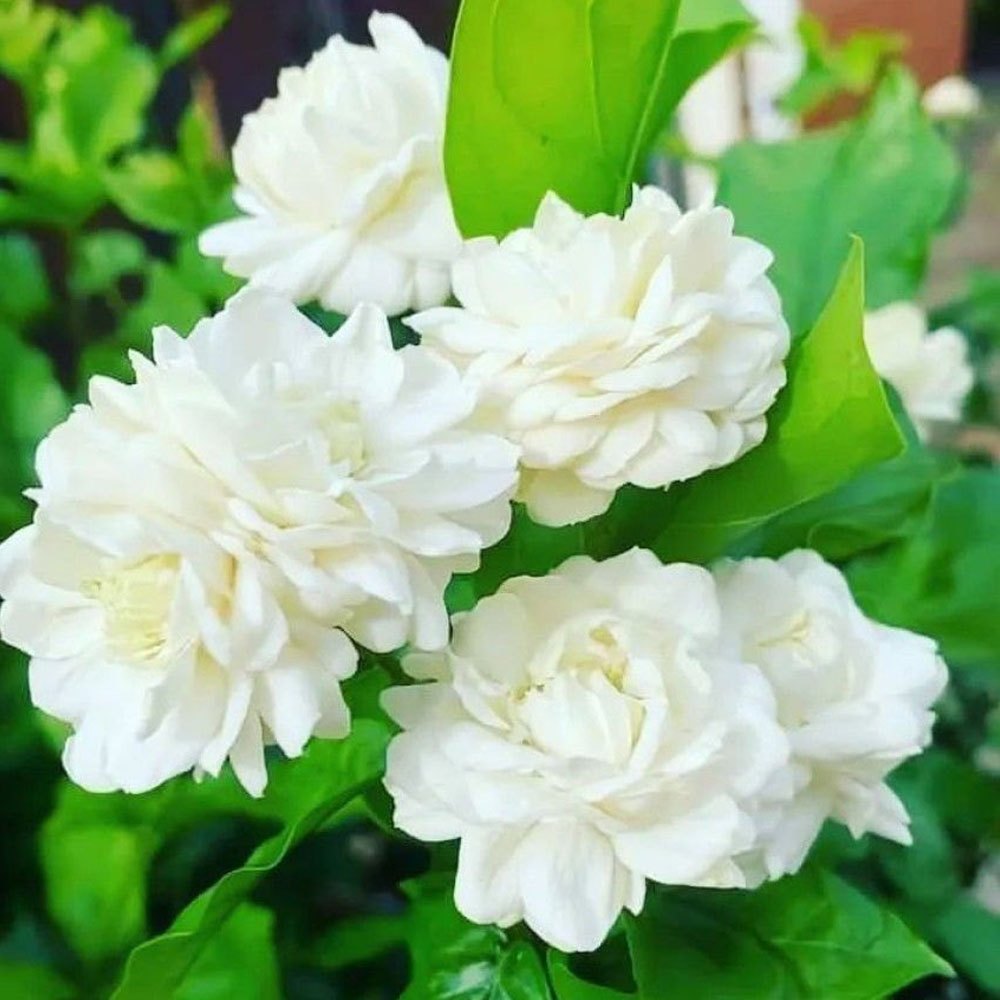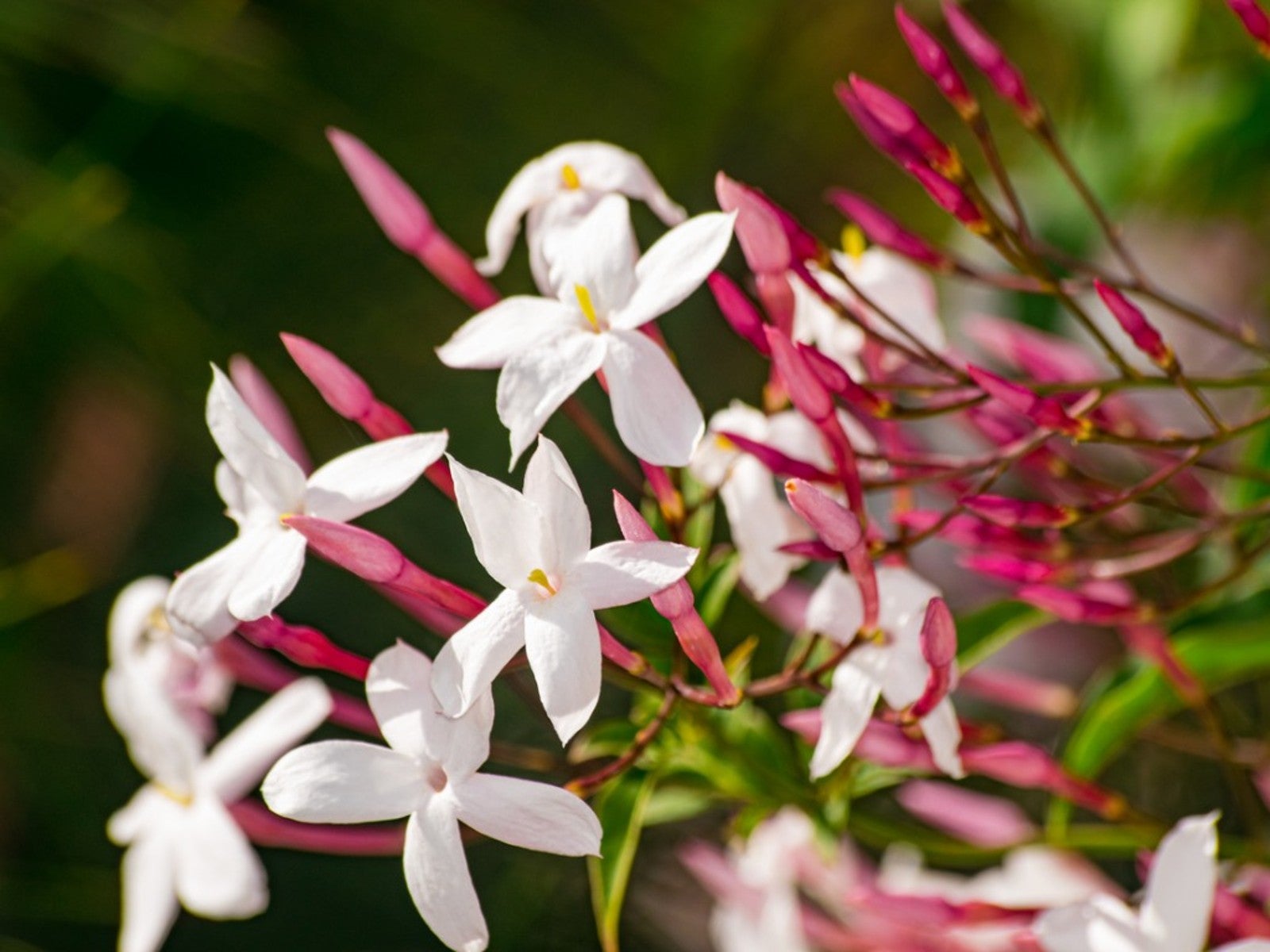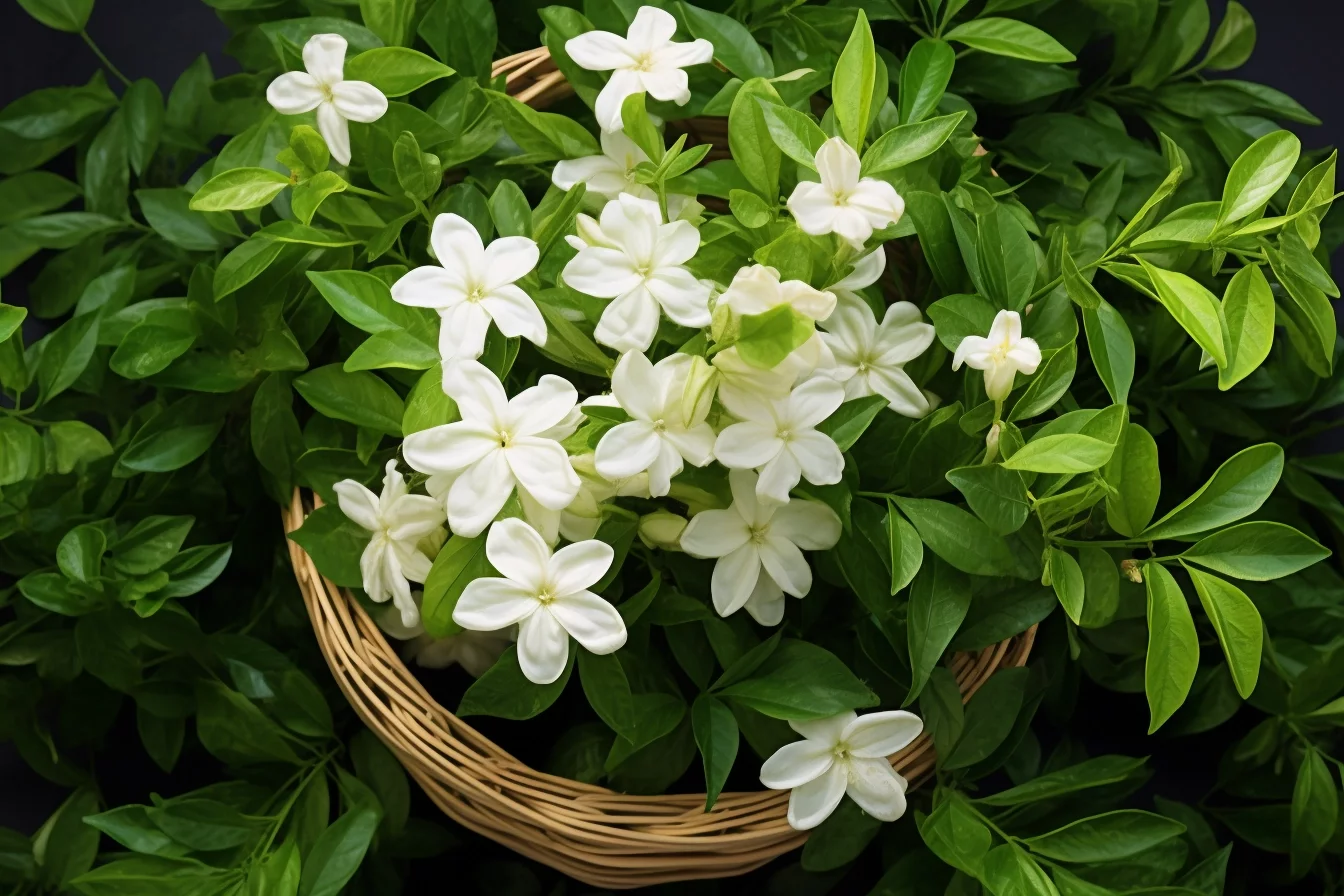Imagine delicate petals unfurling in the morning sun, releasing a fragrance that captivates the senses. Jasmine, with its timeless beauty and deep cultural roots, is more than just a flower; it’s a harmonious blend of elegance and aroma.
In this blog post, we’ll metaphorically put on our gardening gloves to explore the diverse varieties of jasmine, providing insights into their cultivation and care. From the art of nurturing fragrance to the gentle skill of pruning, we’ll cover every detail. But that’s not all—we’ll also delve into jasmine’s rich symbolism, its delightful presence in cuisine, and its intriguing connections with art and literature.
Different Types of Jasmine Flowers
The world of jasmine offers a remarkable range of types and varieties, each with its own unique appeal.
Starting with the classic Jasmine officinale, known for its elegant white blooms, to the exotic Jasmine sambac, or Arabian Jasmine, which features smaller, highly fragrant flowers, the variety is a delight for any garden enthusiast.
For those drawn to the exotic, Star Jasmine (Trachelospermum asiaticum) stands out with its star-shaped, glossy leaves and sweet scent.
Don’t forget the night-blooming varieties like Night Blooming Jasmine (Cestrum nocturnum), which releases its captivating fragrance after dusk. These variations in size, scent, and appearance offer a personalized jasmine experience, whether you’re cultivating a fragrant garden or adding a delicate touch to your indoor plant collection.
Exploring the different types of jasmine promises a diverse floral palette that extends beyond aesthetics, offering a sensory feast for the discerning admirer.

Growing and Caring for Jasmine
Cultivating the enchanting allure of jasmine is an art that requires a thoughtful approach to growing and nurturing these delicate blooms.
Generally resilient, jasmine thrives in well-draining soil and prefers a sunny spot, although some varieties can tolerate partial shade. Positioning them correctly, ensuring adequate watering without causing waterlogging, and following a balanced fertilization schedule are key to a thriving jasmine garden.
Pruning is another essential aspect—not only does it help maintain the desired shape, but it also encourages new growth and enhances the plant’s overall health. Whether you’re growing jasmine in a pot or letting it cascade in a garden, the reward lies in the intoxicating fragrance and stunning display these flowers bring.
So, let the sun shine on your jasmine, and with a touch of green-thumb finesse, watch as these blossoms infuse your garden sanctuary with their aromatic magic.

Fragrance and Aesthetic Appeal
The allure of jasmine extends beyond its delicate appearance to the captivating fragrance that fills the air. Picture a garden where the sweet, intoxicating scent of jasmine wafts through the atmosphere, creating a magical sensory experience.
This exquisite aroma, often described as a blend of floral and slightly musky notes, has established jasmine as a beloved ingredient in the realms of perfumery and aromatherapy. Yet, jasmine’s appeal is not just about its scent; its aesthetic charm is equally captivating.
Whether climbing trellises in a garden or adorning indoor spaces in pots, jasmine’s white or yellow blooms exude a subtle elegance. The contrast between the glossy green leaves and the pristine flowers amplifies its visual allure, making jasmine more than just a plant—it becomes a living symbol of grace and refinement.
Cultivating jasmine is not merely about growing a flower; it’s about nurturing an immersive sensory experience that elevates the ambiance with natural sophistication.

Symbolism and Cultural Significance of Jasmine Flowers
Jasmine flowers, rich in symbolism and cultural heritage, have woven their fragrant presence into the fabric of traditions around the world.
Celebrated for their purity and beauty, jasmine blossoms often symbolize love, sensuality, and elegance. In many cultures, the delicate white flowers are imbued with religious significance, representing purity and the divine.
The use of jasmine in weddings and other ceremonies underscores its association with love and auspicious beginnings. In some Asian cultures, the jasmine flower, particularly the Jasmine sambac variety, holds deep cultural importance, symbolizing simplicity, humility, and kindness.
For example, in the Philippines, Sampaguita (a type of Jasmine sambac) is the national flower, symbolizing purity, simplicity, and the resilience of the Filipino spirit. Jasmine’s versatility in representing both the ethereal and earthly aspects of life highlights its lasting role as a cultural icon, transcending borders and time.
Culinary Uses
Beyond its visual beauty and captivating scent, jasmine also plays a unique role in the culinary world, adding a fragrant twist to various dishes. Certain varieties of jasmine, such as Jasmine sambac, are edible and cherished for their sweet, floral flavors.
Jasmine flowers can be used to infuse syrups, teas, and desserts, adding a subtle yet distinct flavor. Jasmine tea, a popular beverage in many cultures, showcases the flower’s delicate fragrance and calming properties.
In Asian cuisines, jasmine rice, naturally scented by the flowers during cultivation, is a culinary staple known for its aromatic essence. Creative chefs explore the flower’s potential in both savory and sweet dishes, using its aromatic qualities to elevate the dining experience.

Health Benefits
Beyond its captivating aroma and visual appeal, jasmine also offers an array of health benefits recognized across cultures. Jasmine tea, brewed from its fragrant flowers, is not just a delightful drink; it is associated with various therapeutic effects.
The antioxidants found in jasmine tea may support immune function and promote cellular health. Additionally, jasmine’s calming properties are widely used in aromatherapy, where its scent is believed to help alleviate stress, reduce anxiety, and enhance relaxation.
Traditionally, jasmine has been employed in various medicinal practices for its potential to aid digestion, soothe inflammation, and even improve skin health. While it’s important to view these benefits with a balanced perspective, the historical uses and ongoing research suggest that jasmine’s value extends beyond aesthetics, offering a holistic boost to well-being.
So, the next time you enjoy a cup of jasmine tea, savor not just its exquisite flavor but also the potential wellness benefits in every fragrant sip.

Common Issues with Jasmine Flowers
Cultivating the exquisite beauty of jasmine comes with its challenges and common issues that gardeners often face. Pests like aphids and spider mites can sometimes make their home among the delicate leaves, threatening the plant’s overall health.
Fungal diseases, such as powdery mildew, can also appear, especially in humid conditions. Achieving the right watering balance is crucial, as jasmine prefers consistently moist but well-draining soil; overly wet roots can lead to root rot.
Pruning is essential for maintaining shape and encouraging growth, but it must be done with care to avoid stressing the plant. Moreover, jasmine is sensitive to environmental changes, and sudden temperature shifts can disrupt its blooming cycle.
Despite these challenges, the reward of a flourishing jasmine garden is well worth the effort. With a bit of attention and care, gardeners can navigate these obstacles and enjoy the enduring beauty and fragrance of thriving jasmine blooms.
Conclusion
As we conclude our exploration of jasmine, a delicate dance of petals and fragrance, it becomes clear that jasmine is not merely a plant; it’s a living symphony of beauty, aroma, and cultural significance. From exploring the diverse varieties and the nuances of cultivation to uncovering the rich cultural meanings entwined with these blooms, jasmine reveals itself as a multifaceted gem in the botanical world.
While challenges and common issues may arise, the reward of a thriving jasmine garden stands as an aromatic testament to the gardener’s dedication. Whether you’re drawn to the poetic elegance of jasmine in literature, the culinary delights it offers, or simply the pleasure of its fragrant presence in your garden, let jasmine’s allure continue to inspire your appreciation for nature’s finer offerings.
As we part ways with this exploration, may your gardens always be fragrant, and your appreciation for jasmine ever-growing. Until our next aromatic adventure, happy gardening!
